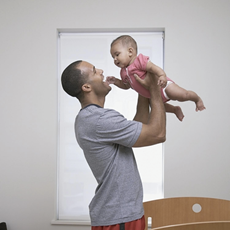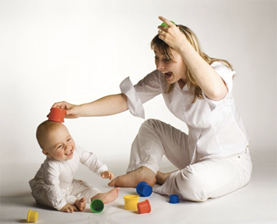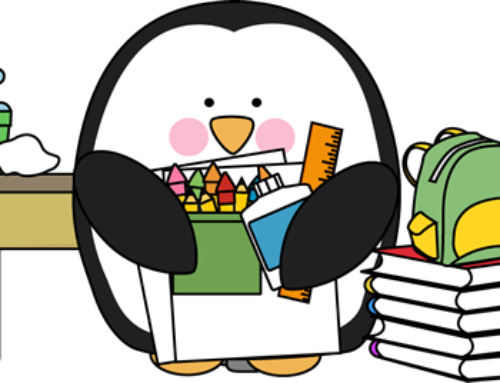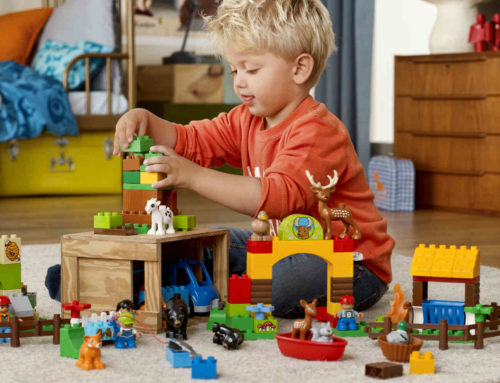
Last year I had a wonderful idea. Father’s Day was approaching so I thought of a fun activity that I could do with my then almost 2 year old. We could make daddy a present!
So I got out some paint and had grand plans of framing a beautiful picture of our toddler’s handprints. Something like this…

How hard could it be? So there I was, 8 months pregnant trying to pry open his clenched fists while he’s screaming and thrashing around with paint going everywhere (except onto the paper of course). Daddy got socks in the end.
Trying to get a child to do something they don’t want to do is never fun. We’ve all been there. Who would have thought getting dressed, getting undressed, getting into the bath, getting out of the bath, going to bed etc could be such a dramatic series of events?
This is why it is so important to let your child lead when you want to encourage your child to start talking, or to talk more!
Why should you let your child lead?
When adults lead or direct games, conversations or any other kind of interaction we are taking it upon ourselves to determine what the child needs to know and learn. Whereas, when you let a child direct the interaction, they are telling you what interests them. This allows you to provide the information and words they want to know which is actually what they need to improve their communication.
I’m not suggesting that you let your child control you. Say hello to icecream for breakfast and goodbye to bath time! No. Of course there are times where you need to say no. You still need to set limits and expectations and redirect your child to another activity if necessary.
The activities that will help your child learn language are the ones that allow the two of you to connect and have fun together such as going for a walk, going to the park, playing with toys, reading books and singing songs. The more you follow your child’s lead, the more you build their confidence and communication skills.
So what do we need to do?
1. Respond immediately with interest
Wh en your child starts an interaction with you it is very important to respond immediately. Don’t forget that they may not necessarily use a word to start an interaction. It may just be a look, a smile, a body movement or a gesture that sends a message. When you respond right away it lets them know that their message has been understood. When you respond enthusiastically (smiling face and animated voice) it’s even better because it builds their confidence and encourages them to keep the interaction going. Remember- you need to respond to what they are interested in… not what you think they should be interested in!
en your child starts an interaction with you it is very important to respond immediately. Don’t forget that they may not necessarily use a word to start an interaction. It may just be a look, a smile, a body movement or a gesture that sends a message. When you respond right away it lets them know that their message has been understood. When you respond enthusiastically (smiling face and animated voice) it’s even better because it builds their confidence and encourages them to keep the interaction going. Remember- you need to respond to what they are interested in… not what you think they should be interested in!
2. Join in and play
 Some children can be quite happy playing quietly on their own. Whilst this sounds like a dream scenario for many parents you really need to set aside some of that time to play with them if you want to build their communication skills. If your child doesn’t start an interaction with you it is still possible to follow their lead by joining in and playing with them. For example, if they are playing with a farm set get some of the animals, start making “moo”, “baa” and “quack” sounds and watch the interaction grow.
Some children can be quite happy playing quietly on their own. Whilst this sounds like a dream scenario for many parents you really need to set aside some of that time to play with them if you want to build their communication skills. If your child doesn’t start an interaction with you it is still possible to follow their lead by joining in and playing with them. For example, if they are playing with a farm set get some of the animals, start making “moo”, “baa” and “quack” sounds and watch the interaction grow.
However, it is very important that you play the way they are playing! Do not take over or change the game and do not try to get them to play with toys the “right” way or plan what’s going to happen next. Make your animal sounds to show that you are there and interested in what your child is doing and then stop. You need to wait silently but expectantly for a few minutes and watch your child closely to give them a chance to lead the next interaction.
3. Imitate
 Copying a child’s actions, facial expressions, sounds and words is a wonderful way to connect with a young child who is just beginning to communicate. If they bang two blocks together follow their lead and bang something together too. If they babble “dadada” repeat it with a big smile on your face. If your child says a word but mispronounces it such as “ta” for “car”, make sure you pronounce the word properly when you imitate it but do not pressure them to say it again.
Copying a child’s actions, facial expressions, sounds and words is a wonderful way to connect with a young child who is just beginning to communicate. If they bang two blocks together follow their lead and bang something together too. If they babble “dadada” repeat it with a big smile on your face. If your child says a word but mispronounces it such as “ta” for “car”, make sure you pronounce the word properly when you imitate it but do not pressure them to say it again.
4. Interpret
 Another powerful way to follow your child’s lead is to interpret your child’s message. That is, put into words what you think your child is trying to tell you through their actions and sounds. If they have their hands reaching towards you for you to pick them up say “Up!” as you lift them up. When you interpret make sure it is from the child’s point of view. For example, if they are pushing their spoon away (or seeing how far they can throw their dinner across the room) instead of saying, “Have you had enough to eat?” say “No more!”. Only use 1 or 2 simple words when you interpret your child’s message. They won’t repeat it straight away but it is important for them to hear it many times before they are ready to say it themselves.
Another powerful way to follow your child’s lead is to interpret your child’s message. That is, put into words what you think your child is trying to tell you through their actions and sounds. If they have their hands reaching towards you for you to pick them up say “Up!” as you lift them up. When you interpret make sure it is from the child’s point of view. For example, if they are pushing their spoon away (or seeing how far they can throw their dinner across the room) instead of saying, “Have you had enough to eat?” say “No more!”. Only use 1 or 2 simple words when you interpret your child’s message. They won’t repeat it straight away but it is important for them to hear it many times before they are ready to say it themselves.
5. Make a comment
 You can also follow your child’s lead by making a short comment that matches what your child is doing or saying at that moment. It may be just 1 or 2 words or a short sentence but the language needs to be simple and clear. Comments are also a great way of continuing an interaction when you know what you’re child is interested in. For example, if your child picks up their favourite teddy bear, gives it a hug and says “bear” you might add to that with, “Cuddles for bear”.
You can also follow your child’s lead by making a short comment that matches what your child is doing or saying at that moment. It may be just 1 or 2 words or a short sentence but the language needs to be simple and clear. Comments are also a great way of continuing an interaction when you know what you’re child is interested in. For example, if your child picks up their favourite teddy bear, gives it a hug and says “bear” you might add to that with, “Cuddles for bear”.
6. Use fun words and sounds
 When you follow your child’s lead by interpreting or commenting on their sounds and actions, try to use fun sounds and words. These are easy for young children to remember and understand because they are usually said with animation and often have a gesture that goes with them. For example, saying “shhh” with your finger on your lips when pretending to put a doll or teddy to bed, or saying “Uh-oh” with your hands on your head when something has gone wrong. Playing with sounds in this way is a very important step to build your child’s confidence to try new words. Examples of sounds/words that I use most often in therapy sessions are:
When you follow your child’s lead by interpreting or commenting on their sounds and actions, try to use fun sounds and words. These are easy for young children to remember and understand because they are usually said with animation and often have a gesture that goes with them. For example, saying “shhh” with your finger on your lips when pretending to put a doll or teddy to bed, or saying “Uh-oh” with your hands on your head when something has gone wrong. Playing with sounds in this way is a very important step to build your child’s confidence to try new words. Examples of sounds/words that I use most often in therapy sessions are:
- Brmm, Beep, Crash, Stop, Go! – when playing with toy cars
- Choo- choo, chugga-chugga, all aboard – when playing with trains
- Moo, baa, quack, neigh, oink, meow, woof, roar and other animal sounds
- Up and down – when stacking blocks or cups
- Boo – during peekaboo games or hide and seek
- Pop! – when playing with bubbles or “jack in the box” type of toys
- Ouch – when something hurts
- Yay, Hooray – when clapping or when something good has happened
- Uh-oh, oh-no, whoops – when something has gone wrong
- Hi, hello, bye bye – when waving
- Yum, yummy, mmmmm – while rubbing tummy or eating
- Yuck, yucky, eww – with an exaggerated look of disgust
Combining different types of responses
When you follow your child’s lead it can be very helpful (and natural) to combine different types of responses. For example if your child sees a dog walk past and says “Woof” you might respond with “Yes Woof! Bye bye doggie” which is both imitating and making a comment. However, try not to use more than two types of responses at a time as it can become overwhelming for your child.
A quick note about asking questions…
Questions seem like an easy way to either start or continue an interaction but this is not always the case. For example, “What did you do at school today? – Nothing”. End of conversation.
Some children feel pressured when they are asked questions and this actually discourages them from communicating more. If they are asked too many questions or if they are asked questions about things they are not interested in the interaction will fall flat.
I will cover questions more in a later talking tips post but for now I would strongly encourage you to only ask simple questions occasionally and instead follow your child’s lead more by imitating, interpreting and making comments.
So there you have it!
When you let your child start an interaction with you by waiting for a look, a smile, a gesture, a body movement, a word or a sound you are establishing a connection with your child.
When you follow their lead and respond immediately with interest you encourage their attempts at communicating and build their confidence.
When you follow their lead by joining in and playing you give them more chances to participate in interactions with you.
When you follow their lead by imitating, interpreting or commenting on their sounds, words and actions you are creating wonderful opportunities for language learning.





